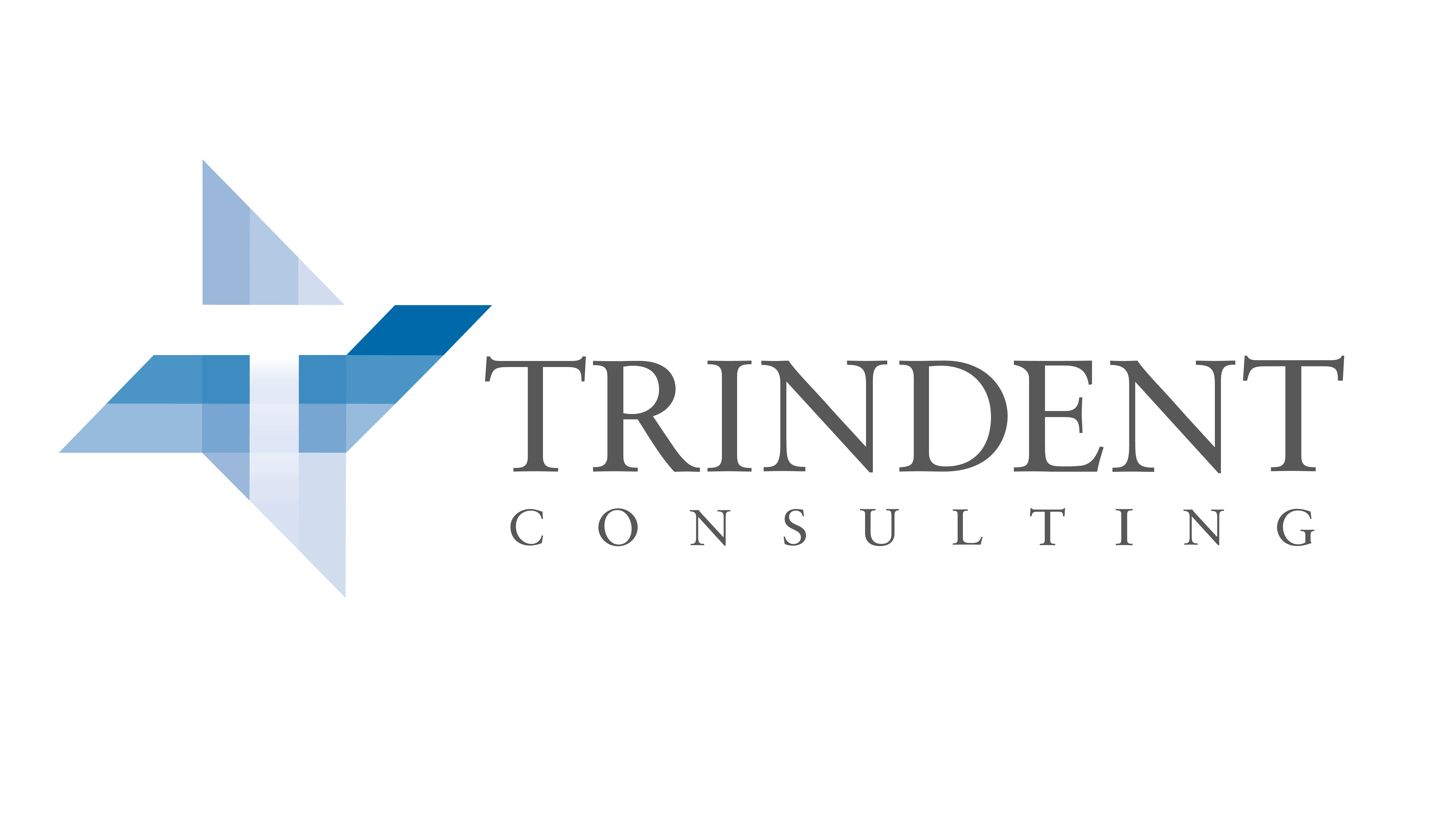Dissecting Trindent’s Values for New Applicants: Passion for Solving Complex Problems

The hiring process should always be a two-way
street, with both parties assessing each other to determine if there is a good
mutual fit. Today’s workforce is a lot
more conscious of what their employers stand for and how they do business. Accepting a job offer has become about much
more than just making money or seeking a title; it’s about aligning your
principles with the firm’s to achieve career satisfaction and fulfillment.
For any applicant, evaluating a company’s values is an important part of choosing to work for them. In order to ensure the longevity of tenure, your focus should be on more than just financial compensation. It also needs to be on determining if there is a match of values and culture. By analyzing a company’s set of values and comparing them against your personal ones, you can determine whether or not the partnership will be a successful one.
Understanding a company’s set of values is more than just reading the words. You need to take the time to break down the value statements and analyze what they really mean. At Trindent one of our three core values is “Passion for solving complex problems”, which can be broken down into two parts.
- Solving complex problems
- Passion
Solving Complex Problems
Trindent works with clients in three verticals –Energy, Healthcare, and Financial Services – to identify problems and implement sustainable solutions. Our engagement teams are made up of consultants with diverse but strong backgrounds, and we leverage this wide-ranging expertise to bring multiple and inventive perspectives to solve complex problems.
It would be simple if every client had,
without deviation, a standard set of problems with no variables, all of which
could easily be fixed by applying cookie-cutter template solutions. However, because no two problems are ever
the same, and every problem requires an innovative solution, our consultants
have to tackle the complexity of each engagement with a scientific but agile
approach.
Passion
In the context of our values, “Passion” refers
to the dedication and enthusiasm it takes to do the work we do at Trindent
Consulting. It speaks to the character
trait we seek in all our candidates.
By nature, the day-to-day activities of management consultants are not repetitive, so this job is not for those who seek roles that have a predictable, daily, rhythmic cadence. We constantly deal with uncertainty and variability, and we look for applicants who are not intimidated by the complexity and who welcome the challenge it brings.
Conclusion
Before interviewing with Trindent, it’s important to evaluate if your approach aligns with our values. Our recruitment process is designed to not only find top candidates in terms of experience and education but also the best values and culture fit.
We look for candidates who seek a challenge to tackle and a fast-paced environment to work in – and who understand the rewards and growth opportunities that can bring.
If you are passionate about solving problems and find meaning in achieving results, then click here to find out more about our recruiting.
Scrum – an Agile Framework

Agile and scrum are familiar terms in
most workplaces. Together, they make
project management and development faster, more streamlined, and more
cost-effective.
But what are “agile” and “scrum”? And is your organization using them?
Agile methodology is an umbrella
term for a set of frameworks and practices based on specific values and
principles. It is a project
management methodology
that promotes flexibility, acceptance of change, and frequent deliverables. Scrum provides structure and rules to
implement agile processes, define roles, manage meetings, and more.
High-Value Features Within Short Cycles
Agile helps organizations build the right product in a
more responsive way, delivering benefits to both the organization and the
customer. Development and delivery of high-value features or priorities within
short cycles decreases overhead and improves efficiency for the organization –
while being more responsive to requirements of the customer.
As small incremental releases are made visible to the stakeholders throughout the development cycle, issues can be identified at an early stage, making it easier to respond to change, which in turn enables enhanced quality and risk management.
How the Scrum Works

Scrum is distinguished from other agile
approaches by specific concepts and practices. Here are some basics:
A sprint is a short, time-boxed cycle (one to three
weeks) when a team works to complete a set number of deliverables.
In Scrum, teams contain three main
roles: Product Owner, who manages the product vision; Scrum Master, who manages
the process; and Scrum Team, who completes the daily tasks required for
each sprint.
Sprint events (or meetings) include:
planning at the beginning of each sprint; daily touchpoints held at the
same time and place every day for 15 minutes during the execution of the
sprint; review after a sprint execution is completed to provide a working
product demonstration to the product owner; retrospective at the end of a
sprint to evaluate the process and identify areas for improvement; and backlog
refinement prior to the next planning to prepare the backlog for the next
sprint.
The goal is to have a deliverable
product ready at the end of every sprint. When a sprint is complete, the next one
begins. This real-time process enables
teams to make rapid decisions based on results.
Is Scrum Right for You?
Its purpose of Scrum to make
unmanageable work manageable through a set of defined processes structured to
allow flexibility. If your project has uncertain
requirements or technology issues where change is likely and requires knowledge
creation and collaboration,
then an agile framework and Scrum is for you.
Click
here to
learn more about Trindent’s approach and methodology to effective project
management.
Productivity and the Interruption Disruption
In today’s digital age, the real estate that businesses pursue is not property, but attention. We live in an era of information and distraction, with myriad points of stimuli constantly competing for our attention. Nowhere does this have more impact than in the workplace where its effect on productivity can be significant.
Not All Interruptions are Adverse
Interruptions are a normal part of a workday. Things like answering phone calls, speaking to colleagues, or replying to email all take us away from some task at hand, but they are expected and accounted for. There is a negligible amount of lost time attributed to these factors, and they are often a necessary part of the workday. If, for example, a discussion with a colleague to get clarity on a subject is necessary to complete a given task, then the interruption is a productive rather than a disruptive one.
It’s when the interruptions become overly frequent, or if they are ones that can be made superfluous by process improvements, that they become a real disruption to the productivity of staff. Such was the case with a former Trindent insurance operations client.
When Interruption Disrupts Productivity
In one past Trindent engagement, a department that processed new business insurance applications had several targets they needed to meet. The staff in this department were given two concurrent responsibilities – they had to handle new application reviews at the same time as they needed to field phone calls from agents.
At an earlier point in the company’s history, both the application volumes and call volumes were manageable enough to allow staff to handle them at the same time without tangible disruption to productivity. However, with the steady growth of the business and an increase in the volume of work, it became clear that the process did not scale well, and staff struggled to achieve daily goals and targets.
Our observation for this client showed that the task of processing applications was being disrupted almost 25% of the time by agent phone calls. Uninterrupted cases took an average of 9.5 minutes to complete, while interrupted ones averaged an almost 15 minute processing time, a loss of almost 5.5 minutes per case.
This multitasking started to cause significant downstream challenges. Not only were the agent calls costing lost time in the application process, but a higher error rate and an increase in rework became a factor as staff missed steps in the verification process because of the pause and resume style of their workflow. As time spent on each application increased and productivity went down, a bottleneck effect was created, and staff fell further behind.
The Disruption Can Be Fixed
The key to fixing interruption disruption to productivity is to identify the problem – in this case, the pause and resume style of workflow caused by competing responsibilities – and to implement process improvements aimed at addressing and mitigating the disruption.
Click here to read more about Trindent’s approach to streamlining workflows and minimizing productivity disruptions in the financial services sector
Sustaining Process Improvement

Previous articles in this series dealt with the challenges of identifying outdated and inefficient processes, the effects that suboptimal processes have on the profitability and competitive position of a company, as well as some of the tools that can be used to identify and improve those processes. But what happens once you implement those improvements?
This article will look at the importance of sustainability
and how a company can sustain the process improvements they’ve achieved.
Post-Achievement Syndrome
Every implementation project is destined to go past
the active phase and enter the phase of sustainability, by which time, all processes,
systems, and behaviors have been brought into a desired final state. The analysis has been performed and
documented, method changes have been identified and implemented, tools have
been deployed, skills have been aligned, training has been conducted, active
management introduced, and savings and improvements brought to target levels. After this hive of activity and challenge, it
seems well-deserved to sit back and enjoy the results. However, there is danger in succumbing to such
post-achievement syndrome, and the price could be the reversal of some of the
improvements.
There are three routes that a company can take
post-implementation; continue improving, maintain at the same level, or revert
closer to the pre-improvement stage. And
with any process that has a human behaviour component, there is an inherent
predisposition to revert to the old ways of operating, especially if the effects
of the improvement haven’t yet become apparent.
The Steps to Sustainability
How then, can an organization sustain
the improvements they’ve implemented?
At Trindent Consulting, sustainability
is one of the values
we deliver on all engagements. With these four steps, we help our clients
sustain and grow engagement achievements:
- Measure. Sustainability actually starts long before the engagement enters the sustainability stage. It starts at the baseline evaluation done before improvements are even in place. By establishing a rigorous practice of tracking and reporting all relevant KPI, as well as their impact on financial statements, a baseline is created to allow for precise measurement of implementation results and to control subsequent sustainability.
- Champion. We create the position of Sustainability Manager at the beginning of a client engagement, and train that person rigorously on our approach. Sustainability Managers, while being part of the client organization, effectively function as part of Trindent team for the duration of the engagement. After implementation is complete, we leave the person with the responsibility of ensuring that results are sustained.
- Include. We make sure that front-line participants of the business process under improvement are involved in sustainability collaboration. By involving staff, higher acceptance rates are realized, and the improvements become more likely to be sustained post-implementation.
- Audit. Once the engagement is in sustainability mode, periodic audits are the best way of ensuring sustainability. Trindent Consulting always performs an audit six months after engagement completion.
The Importance of Sustainability.
Sustainability is important for the same reasons that an improvement project is undertaken in the first place – the detrimental effects that inefficient processes can have on organization’s profitability and competitive advantage. Changing these processes isn’t enough because even the most well-performed implementation loses its value if it can’t be sustained and fully adopted as the new normal.
In the next article in the series, we shall look at
conducting audits on process improvement implementations.
ESG Drives Oil & Gas M&A Activity

Concerning production, the recent increase in rig count has been driven by private E&Ps, not only to enable them to benefit from higher crude oil prices but to make themselves more attractive takeover targets. In contrast, many publicly held E&Ps are facing ESG-related pressures from investors and have reined in their capital spending, returning more money to shareholders (via stock buybacks and dividends), and recently, directing more of their cash flow into their bank accounts. This reluctance of many publicly owned E&Ps to invest more in drilling, even in this environment of higher crude prices, has been a significant factor in slowing U.S. production gains.
The purpose of the preamble was to bring
to your attention how prevalent ESG issues have become among the factors
influencing prices and production levels. The growing
significance of ESG has caused upstream, midstream, and downstream players to
incorporate these issues into their strategies and operations.
For example, the
increase in crude oil prices has supported a rise in energy stock prices.
However, many investors, lenders and others remain wary of oil and gas
companies, not only based on the energy industry’s historic volatility but also
the tremendous social, political and financial pressures that hydrocarbon
producers, midstream companies, and refiners face in demonstrating that they
are addressing environmental, social, and governance issues. ESG has come to
the main stage in the U.S., Canada, and elsewhere, and will influence Oil and
Gas (O&G) activity in the short-term and beyond. Energy companies that
ignore ESG issues run a significant risk. As we have indicated before, it is
important for our clients to focus on their core upstream, mid-stream and downstream
activities while firmly grasping the reality of ESG as a key business strategy.
Mergers and Acquisitions in today’s O&G markets, for example, discuss the strategic and financial benefits of the deal and also highlight the level of ESG practices. The new message to investors, lenders, and the broader public includes awareness of the importance of climate change, workplace diversity, and other ESG matters, addressing those issues and ensuring plans to do more are known.
In net, ESG is now a very important concern for all participants in the O&G industry. What does it involve?, How is it gauged? and How did it so rapidly become one of the biggest issues facing the O&G sector? One thing is clear: ESG cannot be set aside, deferred, or ignored.
The Role Of ESG:
So what does ESG mean to O&G
upstream, midstream, and upstream operations? Let’s start with the E for
“Environment”. For the O&G sector in general, E is all about reducing carbon
emissions or otherwise ensuring impacts on the planet in general are mitigated.
Examples are using drilling strategies designed to reduce how much ground needs
to be disturbed; methane leak-detection programs; piping instead of trucking
crude oil and produced water (to reduce diesel use); recycling and re-using
produced water; reducing or eliminating gas flaring and using wind or solar
power to run drilling operations, pipeline pumps and compressors, etc.
The S is for “Social”. What a growing
number of investors, lenders and others are looking for in this realm is
evidence that the company is prioritizing worker safety and health; taking
steps to develop a diverse workforce and involving itself in the community in
real and helpful ways.
The G stands for “Governance”, which
involves issues like reporting transparency; compliance programs; executives
and managers diversity; and expanded shareholder rights.
Perhaps the first question that comes to
mind is: why are investors and lenders not focused on ensuring the quality,
viability and return of the company’s assets, as well as traditional financial
metrics such as earnings, debt-to-equity ratio, and free cash flow? Another
question that arises is how can investors and lenders know whether a company’s
ESG efforts are real or just window-dressing given the confusion surrounding
ESG issues?
The answer as to why ESG matters to oil and gas companies is simply access to capital. Focus on ESG is increasingly demanded by investors and lenders. This attitude is not limited to activist investors. In our current reality, social and political pressures will certainly influence where the money will flow. Also, large investors usually focus on the long-term view which nowadays factors in the perception of the company’s readiness to adapt to energy transition pressures and mandates . In today’s financial markets, companies that strive for operational efficiency, promote diversity, and practice best-in-class governance are perceived to perform better financially. Changing demographics also play a role. For example, in general, millennials are limiting their investments to companies with “favorable” ESG rankings and many avoid fossil fuel-related investments as a matter of principle. The next question is on which basis can investors, lenders and others judge whether an energy company is good or bad on ESG issues? There isn’t a widely recognized ranking or index. According to the literature, there are many different lists developed by the financial sector and other specialized companies in the area, each with their own criteria and approaches. The consensus first step in establishing ESG ratings and rankings should be to generate listings of companies by categories and subcategories. For example, we start with energy companies as the category and midstream and refining companies as the subcategories. We would also have for example, electric utilities, gas utilities and renewable energy as further subcategories. The reasons to divide and subdivide companies into buckets are clear: energy companies face a very different set of ESG issues and concerns than, say, a hospital, an electronics manufacturer, or a food packer.
Due to ESG’s increasing level of importance, we have recognized the need to be ready to support our clients in this realm. ESG issues are taking on an increasingly significant role, not just in enhancing companies’ environmental stewardship, but also in improving their position with investors, lenders, and regulators, and even impacting employee talent acquisition.
The author of this article Ivan Parra is a Senior Consultant at Trindent Consulting.
7 Steps to Making Your Meetings More Effective
All too often, our schedules become completely booked with back to back meetings and leave us questioning at the end of the day whether our time was spent effectively. The truth is, meetings are one of the most expensive time wasters in business. According to a study performed by Altassian, the average employee attends 62 meetings per month. If we assume the average meeting is 1 hour and the average American worker is paid $24.57 per hour according to the Bureau of Labor Statistics, the average monthly cost of meetings is $1,523 per employee. The cost of meetings continues to grow exponentially depending on the number of team members and their seniority.
However, when executed effectively, meetings can be the necessary instrument for a team to drive improvement and deliver results. Keywords, when executed effectively!
Here are 7 steps to making your meetings more effective:
- Clearly Outline the Goal/Objectives of the Meeting
First off, ask the question, do we need a meeting to meet this objective. If not, then go with the alternative and do not hold the meeting. Once there is an objective, communicate this to all attendees so they can be engaged and understand the reason they are devoting their time.
- Distribute Agenda and Materials Prior to the Meeting
All effective meetings have an agenda and more importantly, they follow the agenda. The agenda should be distributed prior to the meeting to allow participants to prepare useful contributions. Other materials that will be reviewed or referenced should also be distributed whether this be performance dashboards, budgets, or schedules.
- Ensure Attendees Come Prepared to Contribute
Although distributing the agenda and materials before the meeting will allow for participant engagement, this is not all that’s needed. It’s also important to establish the expectation with your attendees that everyone will be consulted/called to contribute.
- Keep to the Time Contract
37% of meetings start late and an even larger percentage run over time. To ensure meetings are no longer than intended, start and end the meeting as per the agenda. It can also help to designate one participant as the timekeeper to prevent the meeting from running over.
- Table Discussions that don’t Align with the Objective or Agenda
A certain degree of discussion is obviously needed during a meeting. However, when this discussion does not follow the agenda or is not driving towards the goal, the meeting facilitator should step in and reschedule the separate the discussion.
- Assign Actions to Owners with Due Dates
For a meeting to be effective, there must be follow up actions. Effective meetings do a good job capturing these actions and assigning them to a sole owner with a due date. To close the meeting, it’s always good to review the decisions, action items, accountable owners and due dates.
- Follow up on actions assigned prior to the next meeting
Effective meetings are only 20% meeting, 80% of the work associated is with effective follow-up and preparation. Without effective follow up on the actions assigned the meeting becomes a waste of time.
Following these steps will ensure your meetings are not an unnecessary cost to your organization and instead a tool used to achieve results. It is important to remember that good meetings do not just happen, they are managed events!
Cycle Stock and Its Role in Inventory Management
In today’s marketplace, deciding how much inventory to carry is by no means a simple task. With the growth of eCommerce and a competitive international trading scene, inventory managers are finding it harder to make accurate projections to stock their inventories. In such a scenario, we are seeing more project managers depending on safety stock instead of maintaining a steady supply of cycle stock. While this seems like an easier choice, industry experts believe that relying less on safety stock is critical to free up cash and reduce imminent customer service risks.
Let us understand what cycle stock is and what it means for inventory planning and management.
Cycle stock explained
According to business dictionary online, Cycle stock is defined as the inventory that you plan to sell based on demand forecasts. It is the amount of inventory that is projected to be used during any given period. In simple words, it is the inventory needed to meet the regular customer demand in a given period of time. The period is often defined as the time between orders (for raw materials), or the time between production cycles (for work in process and finished goods).
Challenges in maintaining inventory
Industry experts understand that inventory management is usually a rather complex task that involves collaboration between multiple parties including SKUs, suppliers, producers and any such stakeholders involved. As observed by a senior consultant at Trindent consulting during one of the engagements at a major U.S. medical device management company, inventory management was usually driven by factors which were beyond the control of planning or purchasing departments. It is therefore essential to understand the factors that can help to plan and purchase the inventory with better accuracy.
Planning for inventory accuracy
The first important factor in planning for inventory accuracy is to collaborate with all the parties involved in the production, sales and distribution process. Take variables like demographics, seasonality, annual sales and discounts, the cost per unit, storage costs, supplier availability and any such historic figures that may be relevant to the stock planning and purchase process. Getting to know all these factors is half the battle won in terms of being able to make accurate predictions about the forthcoming demand.
The next step is the use an accurate measurement to plan the cycle stock. This can either be done by using the cycle stock calculation formula, or simply through a reliable inventory management software. Accurate planning will reduce dependence on safety stock and hence ensure an increased cash flow and better risk management figures for the business.
Deciding how much inventory to carry is by no means a simple task; however, a more collaborative planning process along with more accurate estimations is the first stop towards improvement and will result in sustainable benefits.
Measures to Implement a Sustainability Strategy
In every engagement, sustainability is a crucial factor that decides the fate of a project’s success. Installing a comprehensive Sustainability Plan ensures a smooth transition to the client and makes sure that there is no lost knowledge during the period. The significance of having a solid sustainability plan becomes evident towards the later phase of a project when the client starts to take over the responsibilities and accountabilities for project activities.

In a typical Oil & Gas engagement for gasoline
blending optimization, a project team consists of members from the refinery that
have a unified commitment to continuously improve blending strategies to reduce
quality gasoline giveaway. Each department tackles inefficiencies that come
down to improving blend scheduling and prediction accuracy, blend execution
accuracy, and analyzer measurement and testing accuracy. All the installed
processes, systems and behavioral changes will revolve around these
workstreams. With multiple stakeholders involved, there are measures one should
take towards the final phases of the engagement to ease the transition process
for the client once the engagement is complete. This includes putting together
a comprehensive framework for clients to follow as well as install tools to aid
the review process.
Implementing a Sustainability Review Process:
It is crucial to have a recurring review process in place to ensure all the installed changes are sustained and improved by the client when necessary. Referred to as a sustainability meeting, this crucial step acts as a platform to review the current performance of the refinery with respect to the established KPIs to revisit baseline and targets to establish new goals as part of continuous improvement, and to develop action items for initiatives that can further help achieve project goals.
Design and Implementation of the following tools can further
aid the sustainment of project activities and improve client engagement during
discussions:
- Performance Monitoring Dashboard: To highlight the weekly and seasonal trends for overall KPIs.
- Financial Evaluation: To track the project benefits/savings with respect to the baseline on a cumulative and annualized basis and determine a project’s overall success.
- KPI Grid: To provide a high-level overview of the KPIs and compare them to the current performance to baseline and targets.
- Action Log to capture action items discussed during the meetings with clear responsibilities and due dates set for each action.
Post-engagement Sustainability Monitoring:
Once an engagement is complete and the client team takes ownership of all the project activities, they can follow the framework provided in the sustainability plan to ensure a continuous flow of activities. This includes the continuation of the sustainability meeting where all stakeholders involved would engage on a frequent basis and maintaining a Sustainability Scorecard to guide the meeting and provide a checklist for the client team to review and discuss all installed changes. Continued use of the Action Log to discuss action items can promote a culture of continuous improvement in the client environment. In addition, it is essential to have frequent recurring touchpoints with the client to ensure all activities and improvements are well sustained.
The author of this blog - Ajay Ramanujam is a senior consultant at Trindent Consulting.
Blog post photo courtesy of tableatny via Flikr
Refinery Maintenance Best Practices

Two common expense reduction
strategies that companies in any industry often pursue are abandoning long-term
projects and cutting corners, but both are a mistake.
In refineries, one of these mistakes is often made by reducing one of the largest operating expenses – preventative maintenance costs. Refinery maintenance costs are broken-down into preventative and reactive. Preventative maintenance costs are costs associated with activities to prevent equipment failures, and reactive maintenance costs are the costs incurred after a failure has occurred.
When preventative maintenance costs are cut, even though these cuts may be well intentioned, their impact can have long-term negative consequences. Reactive maintenance is commonly found to be three to ten times more expensive than proactive maintenance, and results in unplanned outages and overtime. For a refinery, this translates into higher than needed operating expenses, a culture of distrust towards planning activities, and a feeling of being overwhelmed. Cutting costs associated with proactive maintenance ultimately increases equipment failures and overall maintenance costs.
At Trindent Consulting we suggest a more targeted approach. We focus on actions that reduce reactive maintenance and increase Overall Equipment Effectiveness. We assist companies to establish well-defined Asset Performance Management programs that typically include:
- Defect Elimination – Defining the guiding principles for investigation selection and approach for identifying the root causes of failures to prevent reoccurrence.
- Work Management – Establishing Standard Operating Procedures for prioritizing preventative and reactive work orders and managing the work order backlog.
- Refining Preventative Maintenance Strategies – Optimizing existing Preventative Maintenance Programs to the proper activities, frequency, and detail required for effective work order completion.
- Inventory Management – Balancing an inventory to ensure that it is lean and manageable but preventing the need for rushed orders.
To
identify if your organization may be suffering from over-reliance on reactive
maintenance, consider the following questions:
- How much production was
lost in the last year due to unplanned outages? - How many safety
incidents occurred in the last year due to equipment failures? - In the last year, what
proportion of maintenance work was planned versus unplanned? - How many weeks behind is
the work backlog? - How many overtime hours
were there in the last year?
If
any of these questions are unanswerable, or the answer to any of these
questions makes you feel uncomfortable, then it is a good time for an objective
third-party review. Trindent offers
in-depth assessments of a company’s status quo and identifies behavioural,
process, and systematic challenges within an organization.
To learn more about how Trindent can Make it Happen in your company, reach out to our team on LinkedIn or through our Contact Us page.
This blog is authored by James Greey, a Senior Consultant at Trindent Consulting.
Forward to Basics
The expression “back to basics”
suggests there is an advantage to focusing on simple, fundamental ideas before getting
wrapped up in new, overly complicated ones.
In today’s business world, there’s no shortage of new, refined, or re-purposed methods, practices, principles, tools, and techniques in every industry. However, when communicating and making business decisions, it’s important not to lose touch with what’s tried-and-true.
Often, in pursuit of innovation, businesses will over-complicate
solutions or get distracted by new and trendy approaches with all their
accompanying promises, bells and whistles.
So, when an organization finds itself struggling to address a problem,
or getting lost in a complicated approach, it’s a good idea to come back to
basics – or perhaps more appropriately, forward
to basics.
To Use the Basics, Remember the 5 Ws and H
No matter the size or nature of a task, when defining its requirements
and determining its roadmap, it pays to start with the 5Ws and H. This is the best way to ensure that
the context of the task is understood, and all its relevant requirements captured,
and subsequently communicated effectively.
What are the basics?
- Why – defines the needs, issues or opportunities being contemplated.
- What – identifies the functionalities, inputs, outputs, and
deliverables. - Who – establishes the key stakeholders, including RACI parties; who
is responsible, accountable, consulted, and informed. - When – sets the timelines for the outcome, including milestones,
activities, and follow-ups. - Where – deals with the geographic and/or logistical aspects of the process.
- How – deals with the deployment of methods, practices, tools and
techniques... and comes after the 5 Ws have been answered.
The Basics in
Action: Why, What by Who, When, Where
and How
To demonstrate forward to basics in action,
let’s look at how managers can use the 5Ws and H to give their teams clear and
unambiguous parameters around a certain task.
Active managers recognize the importance of clear communication in
delegating tasks and maximizing team productivity. Keeping the basics in mind when managing
teams can make an immeasurable difference to how well a team can function. It’s a straightforward way to ensure everyone
understands what is expected of them and alleviates the need to interpret
unclear instructions that inevitably leads to re-work or follow up.
In
our sample scenario, a manager is asked to track their team’s hours. Putting the basics into action, the manager
can easily and clearly communicate “why, what by who, when, where, and how”:
- Manager
is required to report to their Senior Manager the hours billed to a project by
individual team members daily so that the Senior Manager can stay up to date on
costs (why tasks are being done). - Manager
creates a report to track daily hours by individual team members, ensures team
members submits their hours, generates and submits the report; team members
submit their hours; Senior Manager receives the report and uses the information
to stay up to date (what are the tasks) - Manager,
team members, Senior Manager (who is involved) - Individual
hours are submitted by end of day; the report is compiled and submitted by noon
next day (when do tasks occur) - All
tasks are completed online (where do tasks occur) - Individual
hours are input into a company intranet site, which also generates the
report. The report is submitted via
email (how tasks are to be done)
The
example clearly illustrates how the basics in action create a straightforward
and easy to understand path to the completion of a necessary task, without any
ambiguity that can lead to guessing and waste.
Use the
Basics to Move Forward in Consulting
The 5Ws
and H approach is simple, effective, and proven – and should be an essential tool
in every consultant’s toolbox. Using it
as guide for engagements tasks and incorporating it into
your communication with your team and
your clients will make you more effective as a consultant.
Consultants
have any number of new, sophisticated, and intricate tools and methodologies at
their disposal, but this tried and true one will always keep you moving
forward.





